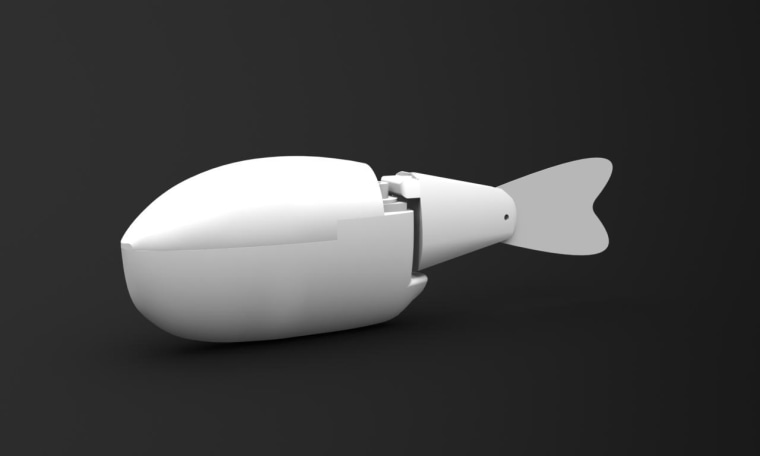
When we start to follow human-like robots wherever they choose to lead us, we'll know the apocalypse has arrived. For fish, that moment is now.
Researchers have built a robot that sort of looks and swims like a fish and used it to lure real fish into schooling around it.
"In the future, what you would like to do is deploy these robots in the environment and have them be able to steer fish away from pollution, away from a danger," Maurizio Porfiri, an engineer at the Polytechnic Institute of New York University, told me on Tuesday.
Porfiri and colleague Stefano Marras embarked on this robotic trickery in an effort to better understand collective animal behavior.
Prior research suggests many species of fish swim in schools for advantages such as predator avoidance, finding mates, and saving energy, despite costs such as increased competition for food.
The behavior was traditionally assumed to be self-organized, in which all members of the school behave like an egalitarian super-organism, they explained Feb. 21 in the Journal of the Royal Society Interface.
However, subsequent research has shown that leaders could emerge in these groups. If so, could a robot be a leader?
To find out, the pair put a robotic fish in a tank with individual golden shiners and studied under what conditions the real fish might follow it.
They found that when the robot is not moving, fish pay no attention to it, but when its tail is moving at certain frequencies in flowing water, they will line up behind it to take advantage energy-saving hydrodynamics.
"This provides some guidelines on how you design your robot," Porfiri said.
The latest findings fit into overall research on designing such robots. Other studies have focused on what colors and patterns, for example, are attractive to real fish.
The ultimate goal, Porfiri noted, is to "infiltrate a group of live subjects with robots and then use these robots to change the decision process in the group."
While steering fish away from danger and around dams is the targeted use for such robots, couldn't they do the reverse as well -- say, steer them into a fishing net?
John Roach is a contributing writer for msnbc.com. To learn more about him, check out his website and follow him on Twitter. For more of our Future of Technology, watch the featured video below.